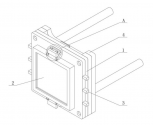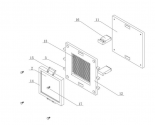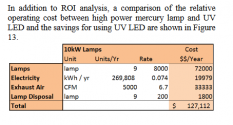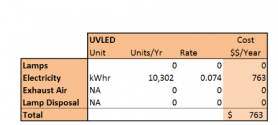This is the patent for the above module, different from using a mercury lamp this UV light source looks pretty compact for the power.
A light source head assembly of a lithography machine
App Num:
CN202310743157.2
File Date:
2023-06-21
Pub Num:
CN116520650A
Publish Date:
2023-08-01
Assignee:
Zhangjiagang Qidian Photoelectric Technology Co., Ltd.


A light source head assembly of a lithography machine
App Num:
CN202310743157.2
File Date:
2023-06-21
Pub Num:
CN116520650A
Publish Date:
2023-08-01
Assignee:
Zhangjiagang Qidian Photoelectric Technology Co., Ltd.
Abstract
The present invention relates to the technical field of photolithography machine light source components, in particular to a photolithography machine light source head assembly, including a light source device, a collimation module, an air cooling device and a water cooling device. The rear of the light source device is fixedly connected to the water cooling device. An air-cooling device is provided in the light source device, and a collimation module is provided on one side of the light source device. The light source device includes a rear plate, an engaging body and a clamping device. , the front plate is provided with evenly distributed bolts. In the present invention, through the fixed block, the connecting rod, the engaging rod, the mounting block, the chute, the fixing plate, the positioning rod, the first spring and the clamping body , you can directly push the clamping rod, and push the clamping body to move through the clamping rod. After the bottom of the clamping rod contacts the mounting block, release the clamping rod, and the clamping body can engage the clamping body under the action of the first spring. The rod is engaged, and the engaging rod is pushed to move at the same time, so as to realize the fast installation of the fixed shell.
The present invention relates to the technical field of photolithography machine light source components, in particular to a photolithography machine light source head assembly, including a light source device, a collimation module, an air cooling device and a water cooling device. The rear of the light source device is fixedly connected to the water cooling device. An air-cooling device is provided in the light source device, and a collimation module is provided on one side of the light source device. The light source device includes a rear plate, an engaging body and a clamping device. , the front plate is provided with evenly distributed bolts. In the present invention, through the fixed block, the connecting rod, the engaging rod, the mounting block, the chute, the fixing plate, the positioning rod, the first spring and the clamping body , you can directly push the clamping rod, and push the clamping body to move through the clamping rod. After the bottom of the clamping rod contacts the mounting block, release the clamping rod, and the clamping body can engage the clamping body under the action of the first spring. The rod is engaged, and the engaging rod is pushed to move at the same time, so as to realize the fast installation of the fixed shell.




